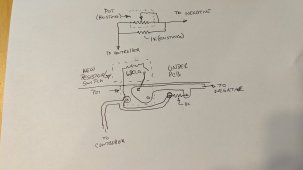I'm going to post this here because I think this thread has value on 12V charging for mobile application.
The Mean Well charger was suggested as a good option in lieu of the Powermax converter. I've had the PMX converter/charger running now for a couple of months and it does a good job in fixed-mode, turn it on when you need it. It's dumb as rocks though.
Another thread was started asking about RV converters, and I mentioned the Mean Well charger. I wrote them today asking about re-boost with their NPB750 charger, it's a two or three-state charger with adjustable charge and float voltage. The spec seems ideal for a 12V lifepo pack.
There's what I asked, and their response by 'Brian'. This is for the NPB750-12 45A charger:
So, as a good charger, once it charges your battery and goes into float stage, you would have to disconnect and reconnect it to go into the boost charge mode again. It does not have a low-voltage re-boost setting.
Probably not the end of the world - left turned on or connected to your AC source, when you plug into shorepower it charges your battery and supplies 12V loads, then you unplug and go to your next destination where you plug in again.
I might buy one of these just to try it out as a comparison to a conventional converter/charger unit, since you can set charge voltage with 2-stages to rest your battery and supply loads.



